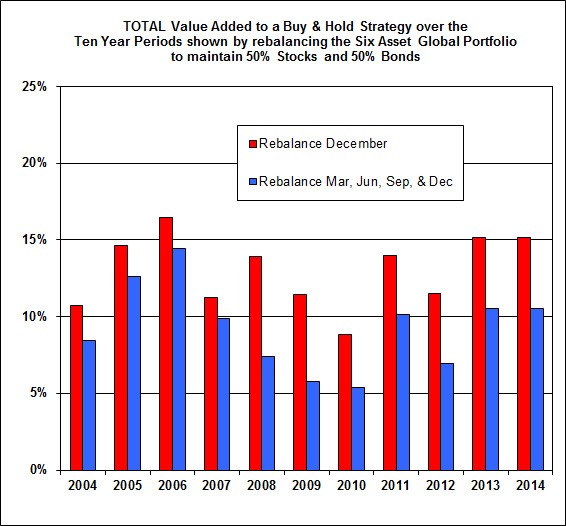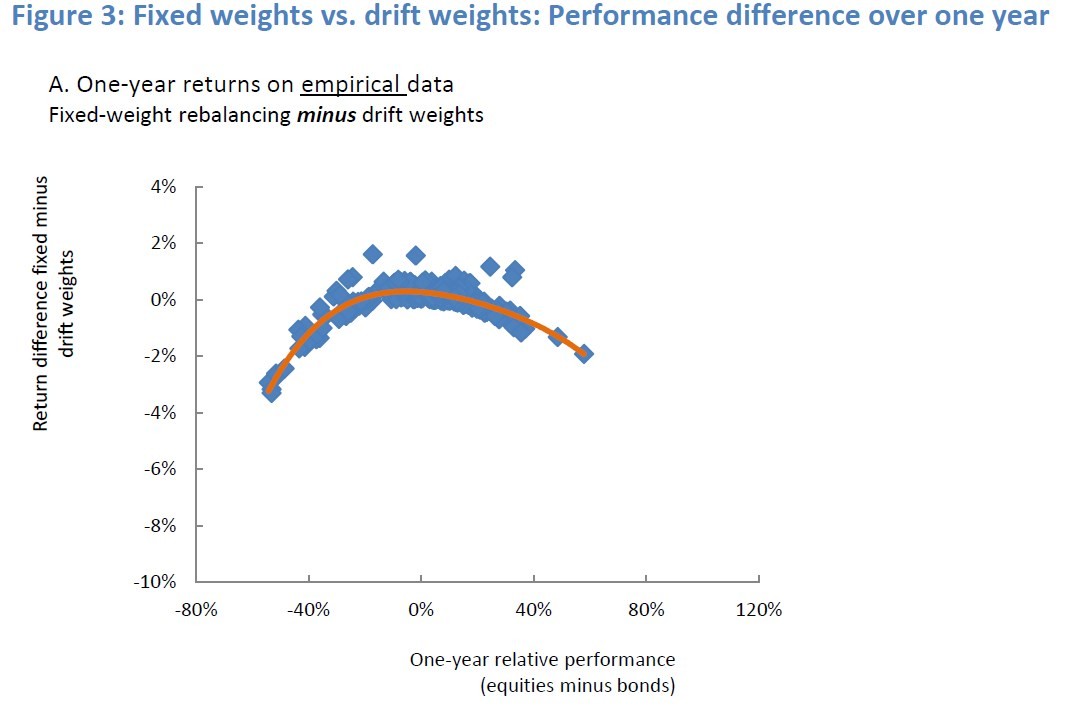Rebalancing strategies Page 1
Post on: 16 Март, 2015 No Comment

Author Topic: Rebalancing strategies (Read 1826 times)
on: April 06, 2012, 08:18:55 AM
I read Harry Brownes Fail Safe Investing, and it struck me that while the asset combination was rationally chosen and clearly very effective, the allocation and rebalancing method were based only on simplicity. Theres nothing wrong with that, but it got me wondering: what IS the best rebalancing strategy, or does it really matter?
I did a few simple Matlab simulations using S&P 500 prices since 1950. I quickly realized that long term simulations would be very misleading. Market behavior has changed greatly over time, and the results will usually be dominated by one era. Not to mention that the stock market from 1950-2012 will never again be duplicated; what I want to know is how different strategies work for different types of market behavior.
So I tested in 3 eras separately: slow steady growth (1950s-1960s), rapid but steady growth (1980s-1990s), and wild fluctuations with little overall growth (2000-present). For purposes of comparing strategies, I used a very simplified model: portfolio of cash (assumed to grow at a steady rate of 2%/year) and SPY.
The strategies were: 1) simple rebalancing to maintain a 50/50 portfolio with 10% bands, 2) rebalancing with overcompensating (i.e. go from 60% stocks to 40% stocks, rather than 50%, and 3) a momentum-based strategy where the portfolio is either 100% stocks or 100% cash depending on recent average performance.
The momentum strategy is the exact opposite of simple rebalancing, so its likely that one will work better than the other consistently. If the stock market followed a weighted random walk pattern, it shouldnt work. However, stock price changes most definitely are not random when you look at monthly data. I verified this in each era separately (stats would not be valid for the entire data set at once — data are non-gaussian and non-stationary). The best predictor turns out to be 1 month performance. Interestingly, correlation goes negative when you go back 24-36 months.

I can post data if anyone is interested, but heres the bottom line: Strategy 2 was the worst performer in all eras, and Strategy 3 was the best performer in all eras. In the 1950s and 1980s-1990s, Strategy 3 was dramatically better; in the 2000s, Strategy 3 was better than Strategy 1 even if you use a 60/40 split rather that 100/0. For #3, rebalancing events occurred just under once a year through the 1990s, then about once every 2-3 months in the 2000s.
I want to rerun this scenario using gold instead of cash (I cant find treasury price data in usable form), but in the meantime it looks to me that momentum-based rebalancing might indeed be the way to go if you are willing to put in the time, and if trading costs are low relative to portfolio size.
Logged














